#andronovo
Explore tagged Tumblr posts
Text

𝔄𝔫𝔡𝔯𝔬𝔫𝔬𝔳𝔬 𝔤𝔯𝔞𝔳𝔢 𝔴𝔦𝔱𝔥 𝔱𝔴𝔬 𝔞𝔡𝔲𝔩𝔱𝔰 𝔞𝔫𝔡 𝔱𝔴𝔬 𝔰𝔪𝔞𝔩𝔩 𝔠𝔥𝔦𝔩𝔡𝔯𝔢𝔫 𝔴𝔦𝔱𝔥 𝔱𝔥𝔯𝔢𝔢 𝔣𝔲𝔫𝔢𝔯𝔞𝔯𝔶 𝔳𝔢𝔰𝔰𝔢𝔩𝔰 𝔭𝔩𝔞𝔠𝔢𝔡 𝔞𝔟𝔬𝔳𝔢 𝔱𝔥𝔢𝔦𝔯 𝔥𝔢𝔞𝔡𝔰.
𝔖𝔬𝔲𝔯𝔠𝔢: @𝔫𝔯𝔨𝔢𝔫յգ
32 notes
·
View notes
Text
🇹🇷🇰🇿 Kazakistan'ın Karaganda oblatında İskit-Saka ve erken dönemine ait 3 bin 400 yıllık bir Türk piramidi bulundu.Uzmanlar,Karajartas anıt mezarının Andronovo döneminin son evresini oluşturan Begazı Dandibay döneminden bir hükümdara ait olduğunu açıkladı.Karaganda Üniversitesi Sarı Arka Arkeoloji Heyeti tarafından tespit edilen Karajartas anıt mezarındaki çalışmalar,4 kazı sezonu sürdü.
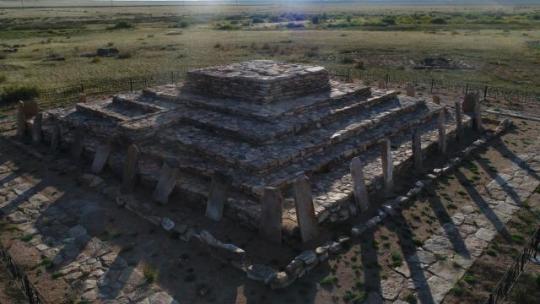
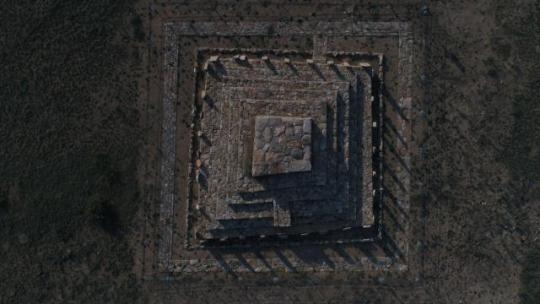
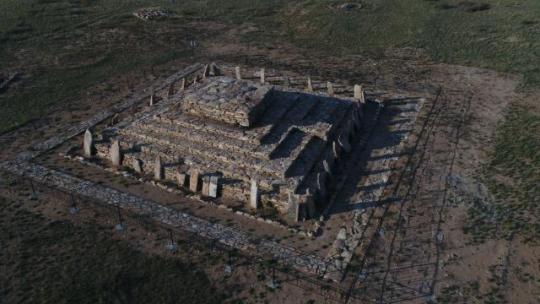
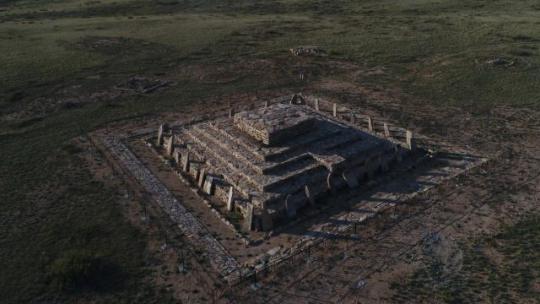

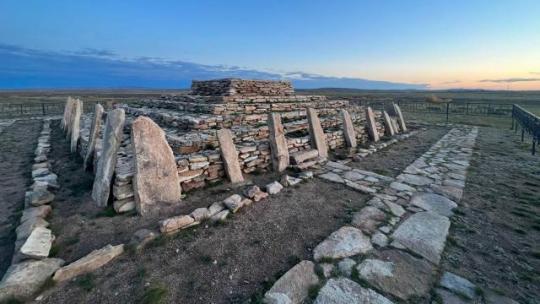
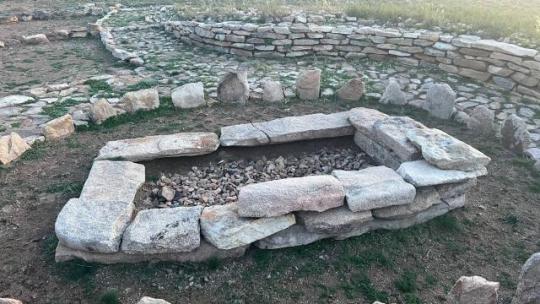
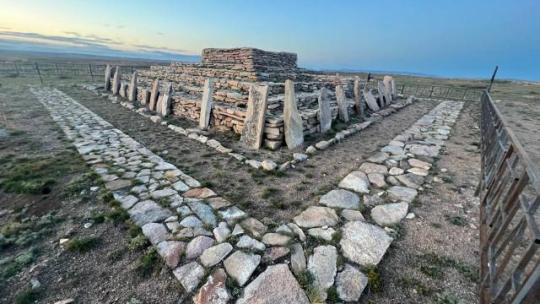
10 notes
·
View notes
Text
A 3,400-year-old Pyramid from the Scythian-Saka period found in Karaganda region of Kazakhstan
Arkeonews November 3, 2023 pyramid belonging to the Scythian-Saka period was found in the Karaganda region of Kazakhstan. Experts announced that the Karajartas mausoleum belongs to a ruler from the Begazı Dandibay period, which was the last phase of the Andronovo period. The pyramid, which was excavated over the course of four excavation seasons by archaeologists from Karaganda University, is…
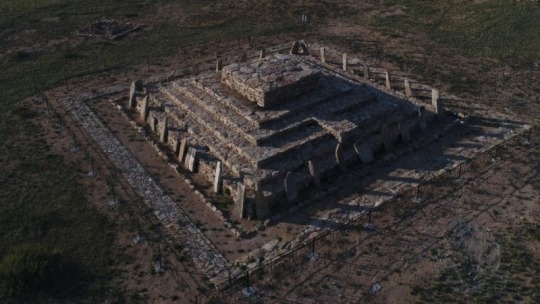
View On WordPress
3 notes
·
View notes
Text
Tajikistan & Tajik Literature

Wall Of Tajik Writers
Tajikistan is a landlocked country in central Asia, bordered by Afghanistan, Uzbekistan, China, and Kyrgyzstan. It is the official home of the Tajiks, an Iranian ethnic group. Tajikistan was home to many well-known early civilizations including the ancient city of Sarazm, the Oxus civilization, Andronovo culture, and many others. The area was ruled by several dynasties including the ancient Achaemenid Empire and the subsequent Sasanian empire. This area experienced the rise and fall of many empires including the soviet empire in 1929. Within the years of the soviet occupation, Tajikistan was home to a literary explosion. The Tajik literary centers include Bukhara and Samarkand in what is now Uzbekistan where there is a large Tajik population. The literature that has survived from Tajikistan and other large Tajik populations is predominantly Socialist Realism, a genre expressed largely by writer, communist, and educator Sadriddin Aini. His work also includes novels and memoirs. Another writer is Abu’l Qasem Lahuti, who wrote “socialist realist” verse and lyrical poetry. Another writer is Mirzo Tursunzoda, he collected Tajik Oral Literature and wrote extensively on social change in Tajikistan. Tajikistan has a rich and varied body of poets, novelists, and intellectuals that were inspired by these writers.
-عبد المسیح
7 notes
·
View notes
Text
i wanna learn about andronovo culture so bad
1 note
·
View note
Text
Modern science to unlock the secrets of couples holding each other in loving embrace for 3,500 years.
These compelling images show ancient burials in Staryi Tartas village, in Novosibirsk region, where scientists have studied some 600 tombs. Dozens contain the bones of couples, facing each other, some with their hands held together seemingly for eternity.
There has been theorising that on the man's death, his wife was sacrificed and buried with him for posterity in an act of intimacy. Or, as Klein suggests, could a young woman have been sacrificed for this purpose, used to fulfil the female part in this ritual?
Professor Molodin doesn't rule out this version, yet makes clear it is only a hypothesis. It is again a suggestion. As a suggestion, it could be. This idea of Klein can be extended to Siberia too, because significant part of the researchers think that Andronovo people were Iranians.
Relationship Rewrite Method👇🏿

1 note
·
View note
Photo


I have been working with the epic heavy metal artist Christian Sloan Hall again, this time to produce some artwork of Western Steppe Herders for my upcoming video on the Yamnaya people. It is hard to reconstruct eneolithic people of the steppe due to lack of evidence for much of their material culture, but we did our best and drew on many sources to try and get it right. Now I shall explain why he depicted them this way.
Because we couldn’t find any Yamnaya clothing, we referred to images of clothing from other eneolithic steppe cultures, namely the Mariupol culture and the Azov-Dnieper culture from the Mamaj Gora cemetery and also referred to female clothing of the later Bronze age Andronovo culture. The burial caps are common to all, and since Yamnaya fall in between those two, it is probably safe to say such hats were worn by their men and women too. We can see from Yamnaya stelae that the men wore pointed beards and sometimes went about naked or semi-naked and also that they wore sandals but Christian depicted this man wearing shoes like those of the Azov-Dnieper culture. Trousers do not appear in the archaeological record until around 2000 BC, but leg wraps are found around Neolithic Europe and Christian has given him these as they would be useful in the colder months when riding a horse.
They are both wearing braids because linguistic evidence reveals there was a PIE word for hair braids. The man has silver hair coils on his braids as these are attested in many Yamnaya burials as are dog /wolf teeth necklaces.
There is evidence for tattooing in the Yamnaya offshoot Catacomb Culture. We can see the tattoos on finger bones where the lack of flesh between skin and bone resulted in stained bones. We should presume that these tattoos covered other parts of their body too but we cannot tell for sure where, however we have Iron Age Scythian tattoos as a reference tool.
Iron Age Scythians also used deer antlers as cheek pieces for their horses, and the pre-Yamnaya Sredny Stog culture also had what appear to be antler cheek pieces so Christian has depicted the Yamnaya horses with similar tack wear.
The weapons and pottery depicted are directly attested in Yamnaya archaeology.
#Yamnaya#scythian#eneolithic#chalcolithic#bronze age#steppe#andronovo#sredny stog#proto-indo-european#indo-european#ukraine#russia#catacomb culture#archaeology#christian sloan hall#survive the jive
238 notes
·
View notes
Text

32 notes
·
View notes
Text
The History of Central Asia Volume 1: The Age of the Steppe Warriors :: Christoph Baumer
The History of Central Asia Volume 1: The Age of the Steppe Warriors :: Christoph Baumer
The History of Central Asia Volume 1: The Age of the Steppe Warriors :: Christoph Baumer soon to be presented for sale on the wonderful BookLovers of Bath web site! London & New York: I. B. Tauris, 2012, Hardback in dust wrapper. Includes: Colour photographs; Coloured maps; Maps to the endpapers and blanks; Plans; From the cover: The epic plains and arid deserts of Central Asia have witnessed…

View On WordPress
#978-1-7807-6060-5#alakul#alexander great#andronovo#black sea#books written by christoph baumer#central asia history#central asian history#cucuteni tripolye#first edition books#fyodorovo#greco bactrian kingdom#indo iranians#islamic empire#kurgan steppe#nomadic horsemen#nomadic riding#religion#sarmatians#scythian kings#turkic history#usatovo
2 notes
·
View notes
Photo
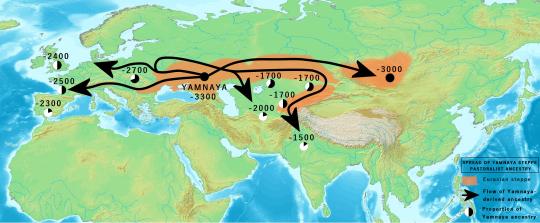
Spread of proto Indo-European (Yamnaya) ancestry up to 1500 BC.
Expansion of Yamnaya-related people, according to Anthony (2007), 2017; Narasimhan et al. (2019); Nordqvist and Heyd (2020),
3000 BC: Initial eastward migration initiating the Afanasievo culture, possibly Proto-Tocharian.
2900 BC: North-westward migrations carrying Corded Ware culture, transforming into Bell Beaker; according to Anthony, westward migration west of Carpatians into Hungary as Yamnaya, transforming into Bell Beaker, possibly ancestral to Italo-Celtic (disputed).
2700 BC: Second eastward migration starting east of Carpatian mountains as Corded Ware, transforming into Fatyanovo-Balanova (2800 BC) → Abashevo (2200 BC) → Sintashta (2100–1900 BC) → Andronovo (1900–1700 BC) → Indo-Aryans
132 notes
·
View notes
Text
I feel like I might be the only nerd who caaaaares, but hey, that what this void is for. So Yeah How Andronika* Became Andromache the Scythian
*Because I know that its technically a typo from where the author changed his mind about the protagonists name, but fuck it I like it so its my HC now
Basing my guesses of the tiny hints we get out of the comics I more or less settled on this as a cultural path for Andy. I think its a fair assumption that what ever her birth name was is 100% lost to time given the fact that she seems to have chosen to base her extant persona on her time as a Scythian
Andy is born into Dnieper-Donets culture 5000-4200BC.
I’m guessing for the sake of simplicity around Deriivka, since the burials there have the sort of ancestral genetic linkage that spans from 7000 bc to 2700 bc. This technically makes Andy Ukrainian. Andy is born in roughly 4836.
Sredney-Stog 4500-3500BC- Deification
These are the folks who are known for starting the process of domesticating Horses and Andy would have had a hand in that presumably, Also stone axes were a thing so She’s been working with that tool for damn near her entire life. We are still pre Kurgan Burials at this point. The bridge of time between this group and the next is the one that Andy spends as a Warrior God leading her people and given that these are the direct descendent of the culture she was born to, it makes sense that she would feel aligned enough to them to not only fight for them but to lead them. We don’t hear of her doing that ever again after this point
Yamnaya- 3300-2600BC
Here we start looking as the end of Neolithic cultures towards the first big shift of Andy’s life (apart from the whole immortality thing) metallurgy. Bronze Age baby! This culture is also generally identified as the most likely cultural base for the Proto Indo European Languages, so from this point on, likely until she meets Quynh every language around her will be building off of this base, so its probably less learning a new language and more expanding her vocab. This is where the kurgans start, and at this point the culture is still working on that horse domestication thing
Poltvaka 2700 2100BC
An outgrowth of the Yamnaya culture, firmly on the Russia side of things. Andy claims the Russians to be partially descended from her people so in general I deferred to that when things diverged. These folks stepped up their production and skill levels with metal and linguistically they are considered to be one of the higher branches on the Indo-Iranian Tree. Another trend in the cultures I leaned towards was picking the ones that spread the best, because I feel like having an immortal warrior among you number would not only be good for morale but once the legends of immortal warriors start flying more folks would probably look to assimilate instead of fight
Abashevo 2500-1900BC
These guys once again expand on the skills in metalworking and also get around to hitching horses to things for speed, they are early adopters of the chariot. We are firmly in the Proto-Indo- Iranian language group, and these guys are warlike, noticeably so. People are wearing metal decoratively as a social signifier. We start seeing signs of shared culture with the Greeks here too. Given the Greek roots of Andy’s chosen name I think it would be safe to say that Andronika comes into play here
Andronovo 2000-900BC
This period is really a massive chunk of overlap spread out across a bunch of linguistically distinguishing subgroup but I point it out because the Andronovo culture has a both a hilariously apt name but its an archeological horizon that stretches all the way into Northwestern China at its greatest breadth, and Towards the end of this cultural horizon (in the 1200′s) Quynh dies her first death. Probably a coincidence, but still really fucking cool, that Andy is potentially having sustained contact with proto Asiatic languages and people groups at the time when she starts dreaming of Quynh. Also this means the language barrier between them might not have been too vast!
Srubnaya1800-1200BC
For the history meme geeks playing along at home we are firmly in the time of Ea-Nasir and his shitty copper(1750) Burials are now being done in timber frameworks inside of burial pits under kurgans. Language is firmly Proto-Iranian. This pocket culture within a culture is relevant specifically because it shows a ton of influence on the Scythian culture, which was one of many to come out of the Andronovo group and when this culture group died it left the Cimmerians and ...
The Scythians 900-200BC- Deification/ Assimilation?
Andronika has become Andromache! The Scythian sub group eventually subsumed and assimilated most of its brother/sister groups from the Andronovo culture as the Scythians spread their territory. This is when Andy was worshipped as a God and there are few options there. There’s Tapati a political guardian, but also a goddess of the home, which may account for why Andy felt so ill suited for the role, The comics also have her refer to herself as a Goddess of War, and the context clues there link that to her formative years as an immortal, before formal worship, and before she decided to walk the earth looking for Quynh. This in a funny was might also account for the fact that Herodotus mentions a war god of the Scythians, literally Scythian Ares, the only god that Scythians practiced physical worship/sacrifice to and the only Scythian God who he uses a Greek name for. Scythian myth also puts a lot of stock in the idea of a First Man or an ancestor to their Kings and People. Andy may have been seen as a living incarnation of this being esp. considering the apparent genderfluid nature of the priesthood.
The Scythian culture is still largely nomadic, and still living on the steppes but they have contact with Greece Persia India and China. They have distinctive metalworking styles that are being used for art. Scythians are apparently damn good guerilla fighters and possibly developed there own from of writing. The Scythians are another war like people but there’s no telling if Andy chose to have a role in that. I’d think its a pretty safe bet though. Its noted that the engaged at war with almost the entirety of their adult population, including women, and that “no people in Europe or Asia could resist the Scythians without outside aid,” which sounds par for the course.
By the end of the Scythian civilization, Andy is likely long gone. Depending on how long you think it took Andy to find Quynh, it could be anywhere between 1031 bc at the best and 600bc at the worst. By the Time Lykon comes around in roughly 331bc, Andromache has almost certainly decided to stop hanging out with mortals and to just chill out with her wife, wrecking the shit of those who deserve to have their shit WRECKED.
There are also a ton of other cultural groups that Andy may have spent time in or rubbed shoulders with. Hell, if she was as paranoid then about not being recognized as an ageless immortal as she is in canon she was probably bouncing from one culture group to another generationally and that the reason why they all have so many similarities. 4600 years of one woman’s accidental influence. ¯\_(ツ)_/¯
So yeah that was a today’s rabbit hole. I have the faintest inkling of names i might choose for Andy before Andy so technically I accomplished what I set out to do!
#the old guard#the old guard meta#if anyone ever wants to write about Andy sitting down and getting drunk with Herodotus#and then later bitching about how he took all of what she said out of context#i would like to see it#andromache the scythian#history#if you know history better than me feel free to get all up in this post and its notes.#i fucking love this shit#but i was not opening jstor because then i would have lost my entire night#not just......3.75 hours
320 notes
·
View notes
Text
ARİLERİN ÜLKESİ (Tarihçi) - Türkçe Tarih
ARİLERİN ÜLKESİ
Erken Çin kaynaklarında Çin İmparatorluğu sakinlerine benzemeyen “Batı Bölgesi”nin uzun yüzlü, uzun burunlu, sıkça kırmızımsı sarı saçlı ve beyaz tenli insanlarından bahsedilmektedir. “Batı Bölgesi”, Merkezî Asya’nın Çin kaynaklarındaki adıdır. Arkeolojik veriler, Moğolistan’ın Batı ve merkezî bö...
Devamını okumak için: https://turkcetarih.com/arilerin-ulkesi/
Airyana Vaeco, Andronovo Kültürü, Ariler, Baltadan Geçirme Kültürü, Çin, Moğolistan
1 note
·
View note
Text

Two adults and two sub-adults, of the Andronovo culture, found in the Novosibirsk region of Siberia.
Source (x)
#bioarchaeology#biological anthropology#archaeology#anthropology#bones#bone#skeleton#skeletons#osteology#posted
64 notes
·
View notes
Text
Discovering the world
Russia 🇷🇺
Basic facts
Official name: Российская Федерация (Rossiyskaya Federatsiya) (Russian Federation)
Capital city: Moscow
Population: 143.6 million (2023)
Demonym: Russian
Type of government: federal semi-presidential republic
Head of state: Vladimir Putin (President)
Head of government: Mikhail Mishustin (Prime Minister)
Gross domestic product (purchasing power parity): $5.47 trillion (2024)
Gini coefficient of wealth inequality: 36% (medium) (2020)
Human Development Index: 0.821 (very high) (2022)
Currency: rubble (RUB)
Fun fact: It has the world’s longest railway and deepest lake.
Etymology
The country’s name comes from the Kievan Rus’ via Greek Rosía and Latin Russia.
Geography
Russia is located in Eastern Europe and North Asia and borders the Arctic Ocean to the north; the Pacific Ocean to the east; China and North Korea to the southeast; Kazakhstan and Mongolia to the south; Azerbaijan and Georgia to the southwest; Ukraine, Belarus, Poland, and Lithuania to the west, and Finland and Norway to the northwest.

There are twelve main climates: subarctic, tundra, extremely cold subarctic, and monsoon-influenced extremeley cold subarctic in the north, Mediterranean-influenced subarctic in the northeast, monsoon-influenced warm-summer humid continental and monsoon-influenced subarctic in the southeast, warm-summer humid continental in the west, and hot-summer humid continental, cold steppe, subpolar oceanic, and subtropical highland in the southwest. Temperatures range from −39 °C (−38.2 °F) in winter to 28 °C (82.4 °F) in summer. The average annual temperature is 3.5 °C (38.3 °F).

The country is divided into 46 oblasts, twenty-one republics (respubliki), nine krais, four autonomous okrugs (avtonomnykh okrugov), two federal cities (goroda federalnogo znacheniya), and one autonomous oblast (avtonomnaya oblast). The largest cities in Russia are Moscow, Saint Petersburg, Novosibirsk, Yekaterinburg, and Kazan.

History
9th-8th centuries BCE: Irmen culture
8500-5000 BCE: Kunda culture
6th-4th millenniums BCE: Kama culture
5300-1750 BCE: Narva culture
5th millennium BCE: Samara culture
5th-4th millenniums BCE: Sredny Stog culture
4900-3500 BCE: Khvalynsk culture
4200-2000 BCE: Comb Ceramic culture
3900-3300 BCE: Repin culture
3700-3000 BCE: Maykop culture
3500-3100 BCE: Novosvobodnaya culture
3300-2600 BCE: Yamnaya culture
3300-2500 BCE: Afanasievo culture
3000-2350 BCE: Corded Ware culture
2900-2050 BCE: Fatyanovo-Balanovo culture
2800-2100 BCE: Poltavka culture
2800-1800 BCE: Middle Dnieper culture
2700-1800 BCE: Okunev culture
2750-1900 BCE: Chermurchek culture
2500-1950 BCE: Catacomb culture
2200-1900 BCE: Sintashta culture
2200-1850 BCE: Abashevo culture
2200-1800 BCE: Lola culture
2100-1800 BCE: Potapovka culture
2000 BCE: Karakol culture
2000-1150 BCE: Andronovo culture
2200-1900 BCE: Seima-Turbino culture; Sintashta culture
2200-1850 BCE: Abashevo culture
2000-1150 BCE: Andronovo culture
1900-1200 BCE: Srubnaya culture
1900-500 BCE: Netted Ware culture
1500-800 BCE: Karasuk culture
1400-700 BCE: Deer Stones culture
9th-8th centuries BCE: Arzhan culture
800-168 BCE: Tagar culture
7th-6th centuries BCE: Aldy-Bel culture
6th-4th centuries BCE: Sauromatian culture
6th-3rd centuries BCE: Pazyryk culture
480-107 BCE: Kingdom of the Cimmerian Bosporus
281 BCE-63 CE: Kingdom of Pontus
2nd-5th centuries CE: Bulan-Koba culture; Kokel culture
3rd-5th centuries: Kok-Pash culture
100-400: Tashtyk culture
100-1500: Kingdom of Zichia
330-555: Rouran Khaganate
552-603: First Turkic Khaganate
7th century-1864: Circassia
603-630: Eastern Turkic Khaganate
603-657: Western Turkic Khaganate
647-784: Tang dynasty
830-690s: Rus’ Khaganate
880-1240: Kievan Rus’
10th century-1241: Cuman-Kipchak Confederation
987-1504: Principality of Polotsk
1129-1521: Principality of Ryazan
1136-1478: Novgorod Republic
1157-1331: Principality of Vladimir-Suzdal
1266-1475: Republic of Genoa
1341-1418: Principality of Nizhny Novgorod-Suzdal
1206-1294: Mongol Empire
1218-1463: Principality of Yaroslavl
1242-1502: Golden Horde
1246-1485: Principality of Tver
1282-1547: Principality of Moscow
1323-1505: Principality of Great Perm
1348-1510: Pskov Republic
1438-1552: Khanate of Kazan
1440s-1634: Nogai Horde
1441-1783: Crimean Khanate
1466-1556: Khanate of Astrkhan
1468-1598: Khanate of Sibir
1547-1721: Tsardom of Russia
1558-1583: Livonian War
1571-1572: Russo-Crimean War
1580-1778: conquest of Siberia
1609-1618: Polish-Russian War
1610-1612: Polish-Lithuanian Commonwealth
1610-1617: Ingrian War
1630-1771: Kalmyk Khanate
1648: Moscow uprising
1662: Copper Coin Riot
1682: Streltsy uprising
1700-1721: Great Northern War
1707-1708: Bulavin Rebellion
1721-1917: Russian Empire
1722-1723: Russo-Persian War
1756-1762: Seven Years’ War
1768-1774: Russo-Turkish War
1773-1775: Pugachev’s Rebellion
1785-2017: Chechen-Russian conflict
1787-1792: Russo-Turkish War
1804-1813: Russo-Persian War
1807-1812: Anglo-Russian War
1812: French invasion
1817-1864: Caucasian War
1825: Decembrist Revolt
1826-1828: Russo-Persian War
1828-1829: Russo-Turkish War
1828-1859: North Caucasian Imamate
1853-1856: Crimean War
1877-1878: Russo-Turkish War
1904-1905: Russo-Japanese War
1905: First Russian Revolution
1917-1918: Russian Republic
1917-1923: Russian Revolution; White Terror
1917-1991: Russian Soviet Federative Socialist Republic
1921-1922: famine
1932-1939: Soviet-Japanese border conflicts
1936-1938: Great Purge
1941: German invasion
1947-1991: Cold War
1989-present: Georgian-Ossetian conflict
1990-1992: Transnistria War
1991-present: Russian Federation
1992: East Prigorodny conflict
1993: constitutional crisis
1994-1996: First Chechen War
1999: war in Dagestan
1999-2009: Second Chechen War
2009-2017: insurgency in the North Caucasus
2007-2015: insurgency in Ingushetia
2008: Russo-Georgian War
2011-2013: protests
2014: annexation of Crimea
2014-present: Russo-Ukrainian War
2022-present: full-scale invasion of Ukraine
2023: Belgorod Oblast incursions; Wagner group rebellion
2024: Kursk Oblast incursion
Economy
Russia mainly imports from China, Germany, and Türkiye and exports to China, India, and Germany. Its top exports are crude oil, wheat, and liquefied petroleum gas.
Besides oil, it has vast coal and natural gas reserves. Services represent 67.8% of the GDP, followed by industry (26.6%) and agriculture (5.6%).

Russia is a member of the Asia-Pacific Economic Cooperation, the BRICS, the Commonwealth of Independent States, the G20, the Organization for Security and Cooperation in Europe, and the Shanghai Cooperation Organization.
Demographics
Ethnic Russians represent 71.7% of the population. The largest minority groups are Tatars (3.2%), Bashkirs (1.1%), and Chechens (1.1%). The main religion is Christianity, practiced by 64.4% of the population, 61.8% of which is Orthodox.

It has a positive net migration rate and a fertility rate of 1.4 children per woman. 75% of the population lives in urban areas. Life expectancy is 70.6 years and the median age is 40.3 years. The literacy rate is 100%.
Languages
The official language of the country is Russian, spoken by 99.3% of the population. There are 25 official languages at the regional level, namely, Abaza (0.05%), Adyghe (0.08%), Altai (0.08%), Avar (0.5%), Bashkir (0.8%), Buryat (0.1%), Chechen (0.9%), Chuvash (0.7%), Erzya (0.02%), Hill Mari (0.02%), Ingush (0.2%), Kabardian (0.4%), Kalmyk (0.05%), Karachay-Balkar (0.2%), Karelian (0.009%), Khakas (0.02%), Komi (0.1%), Meadow Mari (0.3%), Moksha (0.09%), Nogai (0.06%), Ossetian (0.3%), Tatar (2.9%), Tuvan (0.1%), Udmurt (0.02%), and Yakut (0.3%).

Culture
Russians have greatly influenced ballet, cinema, classical music, literature, painting, and space exploration. Russian people can appear rude because they do not smile without a good reason.
Men traditionally wear a long embroidered shirt (kosovorotka), loose pants, and black boots. Women wear a blouse, an embroidered sleeveless dress (sarafan), flat shoes, and a headdress (kokoshnik).

Architecture
Traditional houses in Russia have wooden walls, metal roofs, porches, and balconies.

Cuisine
The Russian diet is based on meat, potatoes, and vegetables. Typical dishes include beef Stroganoff (sautéed beef pieces served in a sauce with sour cream), blini (thin pancakes filled with caviar, fruit preserves, or sour cream), pelmeni (dumplings filled with meat or mushrooms), selyodka pod shuboi (pickled herring coated with mayonnaise and potatoes and covered with grated beet), and shchi (cabbage soup).

Holidays and festivals
Like other Christian countries, Russia celebrates Orthodox Christmas. It also commemorates New Year’s Day, International Women’s Day, and Labor Day.
Specific Russian holidays include Defender of the Fatherland Day on February 23, Victory Day on May 9, Russia Day on June 12, and Unity Day on November 4.

Russia Day
Other celebrations include the International Festival of Snow and Ice Sculpture, Maslenitsa, which marks the transition from winter to spring and features pancakes, and the Scarlet Sails, which includes a mock pirate battle and a firework show.

Maslenitsa
Landmarks
There are 32 UNESCO World Heritage Sites: Architectural Ensemble of the Trinity Sergius Lavra in Sergiev Posad, Assumption Cathedral and Monastery of the town-island of Sviyazhsk, Astronomical Observatories of Kazan Federal University, Bolgar Historical and Archeological Complex, Central Sikhote-Alin, Church of the Ascension, Kolomenskoye, Churches of the Pskov School of Architecture, Citadel, Ancient City and Fortress Buildings of Derbent, Cultural and Historic Ensemble of the Solovetsky Islands, Cultural Landscape of Kenozero Lake, Curonian Spit, Ensemble of the Ferapontov Monastery, Ensemble of the Novodevichy Convent, Golden Mountains of Altai, Historic and Architectural Complex of the Kazan Kremlin, Historic Center of Saint Petersburg and Related Groups of Monuments, Historic Monuments of Novgorod and Surroundings, Historical Center of the City of Yaroslavl, Kizhi Pogost, Kremlin and Red Square, Lake Baikal, Landscapes of Dauria, Lena Pillars Nature Park, Natural System of Wrangel Island Reserve, Outorana Plateau, Petroglyphs of Lake Onega and the White Sea, Struve Geodetic Arc, Uxs Nuur Basin, Virgin Komi Forests, Volcanoes of Kamchatka, Western Caucasus, and White Monuments of Vladimir and Suzdal.

Ferapontov Monastery
Other landmarks include the Bolshoi Theater, the Church of the Spilled Blood, the Komandorsky Nature Reserve, the Krasnoyarsk Stolby, and the Rostov Kremlin.

Komandorsky Nature Reserve
Famous people
Alexander Ovechkin - ice hockey player
Irina Shayk - model
Irina Slutskaya - figure skater
Khabib Nurmagomedov - mixed martial artist
Lev Tolstoy - writer
Maria Sharapova - tennis player
Maya Plisetskaya - dancer
Regina Spektor - singer
Sergei Bondarchuk - actor and movie director
Wassily Kandinsky - painter

Irina Slutskaya
You can find out more about life in Russia in this article and this video.
#discoveringtheworld#langblr#abaza#adyghe#altai#avar#bashkir#buryat#chechen#chuvash#erzya#hill mari#ingush#kabardian#kalmyk#karachay-balkar#karelian#khakas#komi-zyrian#meadow mari#moksha#nogai#ossetian#russian#tatar#tuvan#udmurt#yakut
7 notes
·
View notes
Photo

Modern science to unlock the secrets of couples holding each other in loving embrace for 3,500 years.  These compelling images show ancient burials in Staryi Tartas village, in Novosibirsk region, where scientists have studied some 600 tombs.Dozens contain the bones of couples, facing each other, some with their hands held together seemingly for eternity. There has been theorising that on the man's death, his wife was sacrificed and buried with him for posterity in an act of intimacy. Or, as Klein suggests, could a young woman have been sacrificed for this purpose, used to fulfil the female part in this ritual? Professor Molodin doesn't rule out this version, yet makes clear it is only a hypothesis.It is again a suggestion. As a suggestion, it could be. This idea of Klein can be extended to Siberia too, because significant part of the researchers think that Andronovo people were Iranians.. 'So this hypothesis can be extended to them. But, I will repeat, it is only a hypothesis.There are he says 'a good number' of these couple graves. 'The number impresses. More that this, we see some interesting facts. For Andronovo culture, cremation is more typical, and here we can see such interesting combination like cremation and inhumation in one burial. Why it is so? 'There is a version that they did not just pour the ashes into the grave, but made a doll and put the ashes in this. But we can not say for sure. There are also burials with just several cremated remains. So it is more complicated than They loved each other and died in one day. https://www.instagram.com/p/CkINs-uNP0D/?igshid=NGJjMDIxMWI=
0 notes
